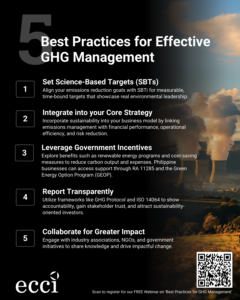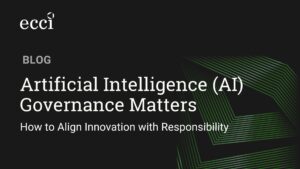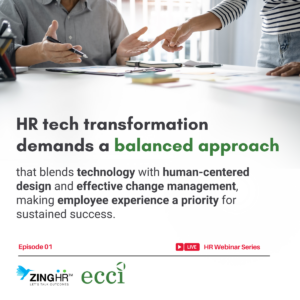Rethinking Continuity in a Disruption-First World
Traditional business continuity models—often static and heavily manual—are struggling to keep up with the pace and scale of disruption. In response, many organizations are beginning to explore more adaptive approaches.
The modern risk landscape demands more than preparedness—it requires continuity that is intelligent, adaptive, and always on. From cyber threats and system failures to natural disasters and geopolitical instability, organizations are navigating an era of unprecedented complexity and operational uncertainty.
Artificial Intelligence (AI) is emerging as a key capability in this shift. Rather than replacing business continuity planning, AI enhances it—by introducing speed, pattern recognition, automated response, and a capacity for continuous learning. The result? A more intelligent, responsive, and resilient continuity strategy.
The Value of AI in Business Continuity
AI transforms continuity from a linear process into a dynamic, integrated function that evolves in real time. Here’s how:
1.Enhance Protective Intelligence
AI systems can track and process large volumes of data—both structured and unstructured—from internal operations, public alerts, digital channels, and beyond. These systems detect anomalies and patterns far earlier than traditional dashboards can.
With these insights, risk teams can identify threats while they are still forming and take preventative measures. It shifts continuity from being a reaction to disruption to a response ahead of it.
2. AI-Supported Response Activation
Time is critical in a crisis. AI assists response teams by rapidly collecting and analyzing relevant data the moment a trigger condition is detected. This enables decision-makers to quickly assess the situation and execute the appropriate response—whether that means isolating compromised systems, adjusting workflows, or issuing timely updates to stakeholders.
By providing real-time insights, AI reduces the delay in understanding what’s happening, minimizes guesswork, and helps teams act with greater confidence and precision.
3. Scenario Simulation and Readiness Testing
AI-powered modeling tools allow organizations to simulate various disruption scenarios using real operational data. These simulations can test system thresholds, identify bottlenecks, and measure response effectiveness under controlled, risk-free conditions.
Over time, AI learns from simulation outcomes and provides recommendations for improving plan effectiveness—an approach that strengthens preparedness and decision-making.
4. Post-Incident Analysis and Competency Building
Once the crisis subsides, AI continues to add value by reviewing how systems responded, how teams coordinated, and where failures or delays occurred. Unlike static after-action reports, AI tools offer ongoing trend analysis that feeds into future planning cycles.
This supports not only a culture of continuous improvement, but also builds organizational competency—helping teams internalize lessons, sharpen their decision-making skills, and respond more effectively to future disruptions, especially in complex or distributed environments.
Implementing AI in Continuity: A Practical Roadmap
Introducing AI into continuity efforts doesn’t require a complete overhaul. It does require strategic alignment, cross-functional collaboration, and a commitment to measurable learning. Here’s a streamlined approach:
1. Start with a Current State Assessment
Review your current business continuity framework. Where are the blind spots? Which parts of the process are too slow, overly manual, or dependent on limited personnel?
2. Establish Response and Recovery Process effectiveness and efficiency
Design and document clear response and recovery workflows across critical functions. Ensure they are practical, well-communicated, and easily activated during disruptions. Then assess how effective and efficient these processes are in real-world conditions—identify delays, gaps, or dependencies that hinder resilience.
3. Deploy Smart Monitoring and Reporting Capabilities
Begin with targeted AI tools that monitor critical systems or high-risk areas. Prioritize where early warnings or data-driven decisions will have the greatest impact.
4. Automate and Simulate Response Scenarios
Work with key teams to define specific response actions for common risk events, then configure AI systems to detect triggers and execute workflows. Use AI-powered simulations to regularly test these scenarios, improving coordination, speed, and confidence through real-time feedback.
5. Upskill and Enable Teams
AI is not plug-and-play. Invest in training teams to understand how AI supports—not replaces their roles. Equip them to interpret AI insights and validate system-driven actions.
6. Review and Refine Regularly
Post-incident analysis should be treated as an input, not an endpoint. Use each event—real or simulated as a learning moment. Continuously evolve your continuity plan using AI-generated feedback.
What Forward-Looking Organizations Stand to Gain
Organizations that integrate AI into their continuity efforts report greater agility, faster recovery times, improved visibility into risk, and stronger stakeholder trust. Just as importantly, they create a foundation for long-term resilience—one that evolves with the pace of change.
In fact, companies leveraging AI for risk monitoring and automated response have seen up to 50% faster recovery times, Additionally, 89% of security and IT leaders now consider deep observability—a core function enabled by AI—as critical to maintaining operational security.
AI-powered simulations and post-incident learning tools have also led to 30–40% improvements in audit preparedness and response accuracy. Beyond internal operations, these capabilities are driving a reputational edge: many leadership teams are seeing increased stakeholder trust as a result of more transparent, decisive incident handling.
These organizations are no longer simply reacting to disruption—they’re building systems that adapt, learn, and lead.
What We Offer
At ECC International, our Organizational Resilience services are built to help organizations strengthen their preparedness, response, and recovery capabilities. We support clients across key areas such as Business Continuity Management (BCM), Crisis Management Planning and Simulation, Emergency Response Planning, IT Disaster Recovery, and ISO 22301 implementation. Our team also conducts audits and delivers awareness and training programs to build internal competency at all levels.
Whether you’re establishing your continuity framework or enhancing it with AI and automation, we provide end-to-end support tailored to your needs. Our goal is to ensure you’re not only equipped with the right tools and strategies, but also empowered to lead through disruption with confidence. For more information check : https://www.eccinternational.com/consulting-category/organizational-resilience/








